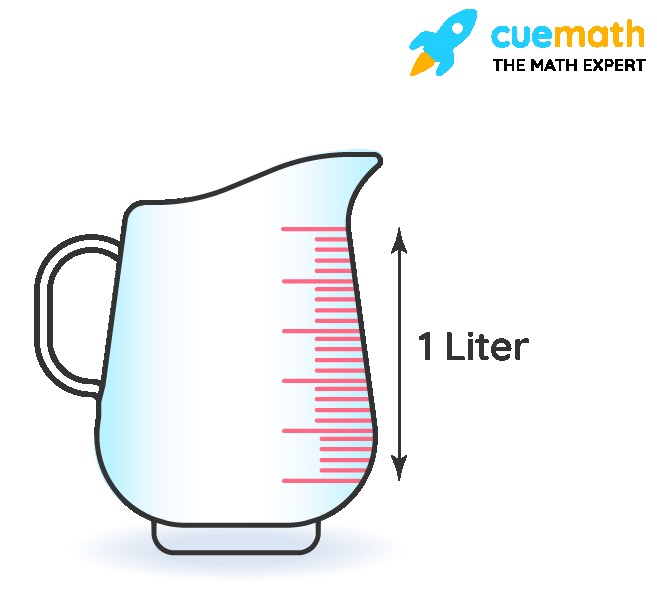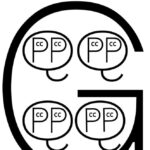Liters and milliliters are fundamental units of volume in the metric system, essential for measuring liquids in everyday life and scientific applications. Understanding the relationship between these two units is crucial for tasks ranging from cooking and baking to administering medication and conducting experiments. This article will explore the question “How Many Ml Are In A Liter?” in detail, providing a comprehensive guide to volume conversion and its practical applications.
Defining the Liter (L)
The liter, symbolized as ‘L’ or ‘l’, is a base unit of volume within the metric system. It’s widely recognized and used globally for measuring the capacity of containers and the volume of liquids. Historically, the liter was defined in relation to the volume of water, and it’s currently precisely defined as being equal to one cubic decimeter (1 dm³). This means if you had a cube that measured 10 centimeters on each side, it would hold exactly one liter of volume.
The liter is a convenient unit for measuring larger quantities of liquids that we encounter daily, such as bottles of water, juice, milk, and fuel. Its size is practical for common household and commercial uses.
Defining the Milliliter (mL)
The milliliter, abbreviated as ‘mL’, is a smaller unit of volume, also within the metric system. The prefix “milli-” indicates one-thousandth, meaning a milliliter is one-thousandth of a liter. In more concrete terms, one liter contains one thousand milliliters. Milliliters are used to measure smaller volumes of liquids, often in situations where precision is important, such as in medicine, cooking, and scientific experiments.
Think of everyday examples where milliliters are commonly used: medicine dosages on syringes or measuring cups, volumes of ingredients in recipes, and capacities of smaller containers like test tubes or vials in a lab. A milliliter is also equivalent to one cubic centimeter (1 cm³), providing another spatial understanding of its volume.
The Direct Conversion: How Many mL in a Liter?
The fundamental relationship between liters and milliliters is straightforward:
1 Liter (L) = 1000 Milliliters (mL)
This conversion factor is the key to moving between these units. It’s a defined relationship within the metric system, designed for ease of use and scalability.
To convert liters to milliliters, you simply multiply the number of liters by 1000.
For example:
- If you have 2 liters and want to know how many milliliters it is, you calculate: 2 L * 1000 mL/L = 2000 mL
- For 5.5 liters: 5.5 L * 1000 mL/L = 5500 mL
- For 0.75 liters (which is three-quarters of a liter): 0.75 L * 1000 mL/L = 750 mL
Converting Milliliters Back to Liters
Conversely, to convert milliliters back to liters, you need to divide the number of milliliters by 1000.
For example:
- If you have 3000 milliliters and want to convert it to liters: 3000 mL / 1000 mL/L = 3 L
- For 500 milliliters (half a liter): 500 mL / 1000 mL/L = 0.5 L
- For 1500 mL: 1500 mL / 1000 mL/L = 1.5 L
Practical Applications of Volume Conversion
Understanding how to convert between liters and milliliters is essential in numerous real-life scenarios:
- Cooking and Baking: Recipes often list ingredients in both liters and milliliters, especially for liquids. Accurate conversions are vital for recipe success. For example, a recipe might call for 0.25 liters of milk, which you would need to convert to 250 mL for precise measuring using standard kitchen measuring tools.
- Medicine and Healthcare: Medication dosages are frequently prescribed in milliliters. Nurses and patients need to accurately convert liters to milliliters when dealing with intravenous fluids or larger volumes of liquid medication.
- Science and Chemistry: In scientific experiments, precise measurements are paramount. Chemists and scientists routinely work with both liters and milliliters, depending on the scale of their experiments. Conversions are necessary for calculations and dilutions.
- Purchasing Beverages: Drinks are sold in various sizes, often labeled in liters (e.g., 1-liter bottles, 2-liter bottles) or milliliters (e.g., 500 mL bottles, cans of 330 mL). Understanding the conversion helps consumers compare sizes and prices effectively.
- Gardening and Home Improvement: Measuring liquids like fertilizers, pesticides, or paint often involves liters and milliliters. Accurate conversions ensure correct dilutions and applications.
Common Questions About Liters and Milliliters
Is 1 L the Same as 750 ml?
No, 1 liter is equal to 1000 ml. 750 ml is less than a liter; it is 0.75 liters, or three-quarters of a liter.
Is 1 L the Same as 1000 mL?
Yes, 1 liter is exactly the same volume as 1000 milliliters. They are just different units to express the same quantity, similar to how meters and centimeters measure length.
What is 1 Liter of Water in mL?
1 liter of water is equal to 1000 mL of water. The density of water is approximately 1 gram per milliliter, but the volume relationship remains constant regardless of the substance being measured (though density will change for different substances).
What is a Liter?
A liter is a metric unit of volume, defined as one cubic decimeter. It is commonly used to measure larger quantities of liquids.
What is a Milliliter?
A milliliter is a metric unit of volume, defined as one thousandth of a liter or one cubic centimeter. It is used to measure smaller quantities of liquids, especially where precision is needed.
How Do You Convert Liters to Milliliters?
To convert liters to milliliters, multiply the number of liters by 1000. This is because there are 1000 milliliters in every liter.
Conclusion
Understanding the conversion between liters and milliliters is a fundamental skill with broad applications. Knowing that there are 1000 mL in a liter allows for seamless transitions between these units, whether you’re following a recipe, administering medicine, or performing scientific measurements. The metric system’s beauty lies in its simplicity, and the liter to milliliter conversion is a prime example of this ease of use. By remembering the factor of 1000, you can confidently navigate volume measurements in various contexts.

